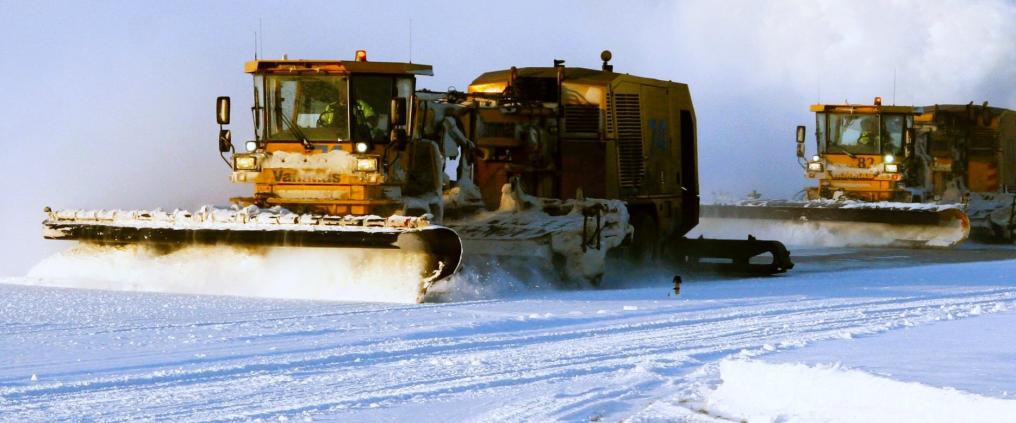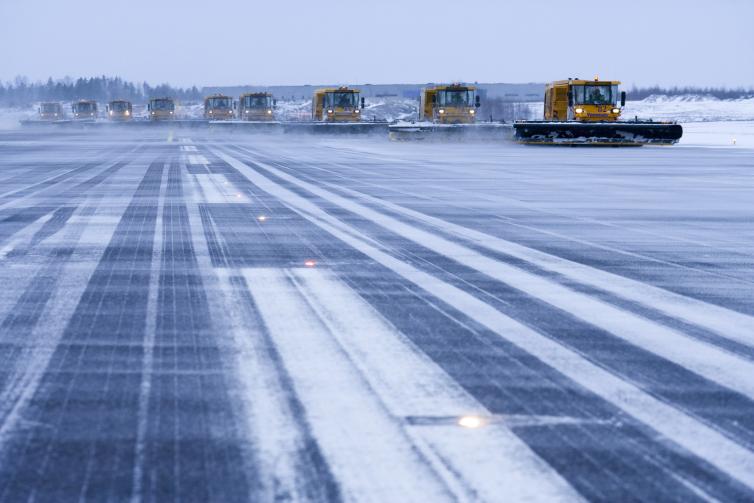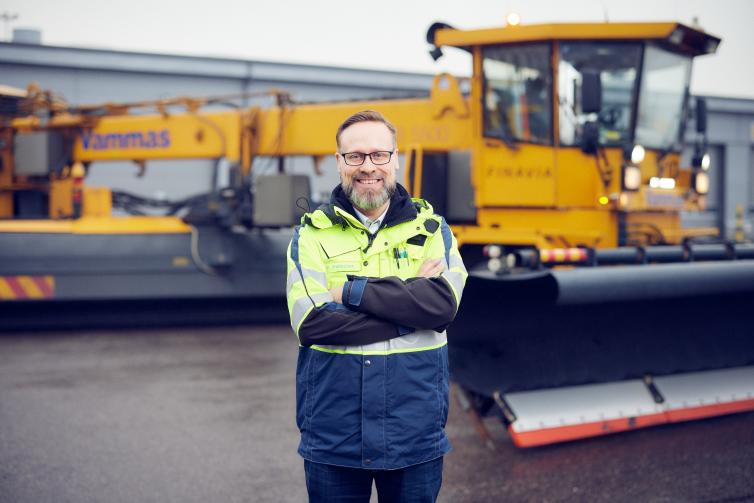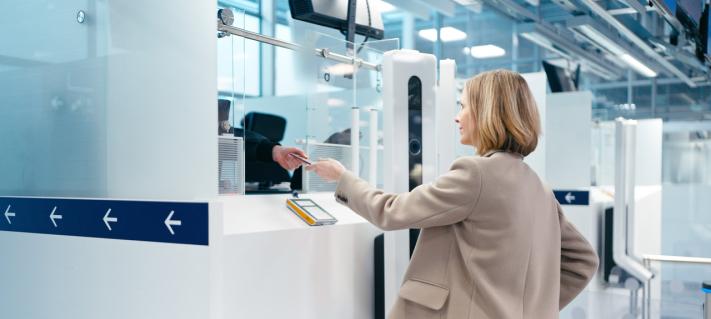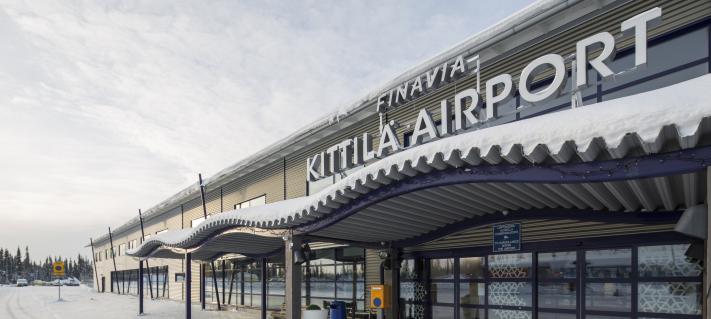“Our goal is safe and smooth air traffic in all weather conditions and all seasons. This requires our world-renowned snow-how,” says Jani Elasmaa, Finavia’s Vice President responsible for runway and apron operations.
It is no coincidence that Finavia’s snow-how is unique on a global scale. Snow-how entails, among other things, snow blowing and ploughing, sweeping and runway skid prevention.
“Here in the Nordic countries, we are used to snowy and icy winters. However, snow-how is the outcome of years of professional development, training, cooperation and determination,” says Pyry Pennanen, Head of Airfield Maintenance at Helsinki Airport.
No solo performances in winter maintenance
Seamless cooperation between hundreds of professionals is required to keep the kilometres and kilometres of runways at Helsinki Airport, for example, operational even in the middle of winter. What is particularly important is continuous dialogue between air traffic control and maintenance.
“Working in the air traffic area must be extremely well-organised and you cannot go solo there. Therefore, it is important that air traffic control and maintenance are aware of each other’s activities at all times,” says Pennanen.
The best way to ensure smooth cooperation is to have well-defined and carefully practised sweeping patterns, according to which snow is ploughed and slippery conditions are prevented on the runways.
“Sweeping patterns are like maps of the precise movements of the snow ploughs. They allow air traffic control to know up to 75 minutes in advance where the maintenance vehicles are at any given time. The air traffic control personnel plan traffic accordingly and make sure maintenance can work in peace. It is like a carefully rehearsed dance routine.”
These accurate and demanding patterns would not be possible without Finavia’s contractors and approximately 130 winter workers who have decades of experience in winter maintenance. For them, snow-how is a matter of pride and honour.
“When a storm hits, everyone has a clear vision of what to do. In the worst weather conditions, the attitude seems to get even better.”
Anticipation is the key
Even in the winter, we must keep our eye on future. Finavia constantly anticipates changes in weather and plans activities accordingly. In this, Finavia gets valuable help especially from the Finnish Meteorological Institute, which provides accurate, up-to-date information on weather phenomena influencing air traffic.
“We are informed well in advance of major snowstorms, for example. This allows us to ensure, together with maintenance, air traffic control and air and ground service companies, that we have enough people at work and everyone knows what to do."
Anticipation is not limited to the winter season. Preparations for the next winter begin as soon as the previous one is over.
“In this line of work, you always have to think six months ahead. Preparations for the next season start already in May, with machinery maintenance as well as recruitment and training.”
Methods evolve but the content remains the same
Finavia’s snow-how has been developed over the years, especially in terms of methods.
“We have built a systematic and repeatable way of working so that larger and larger areas can be cleaned up in a decent time. It means better sweeping patterns and shift arrangements.”
However, the content of the work remains largely unchanged.
“Weather forecasting has developed and machinery is larger and more efficient. Nevertheless, the work is as tough and mechanical as ever."
